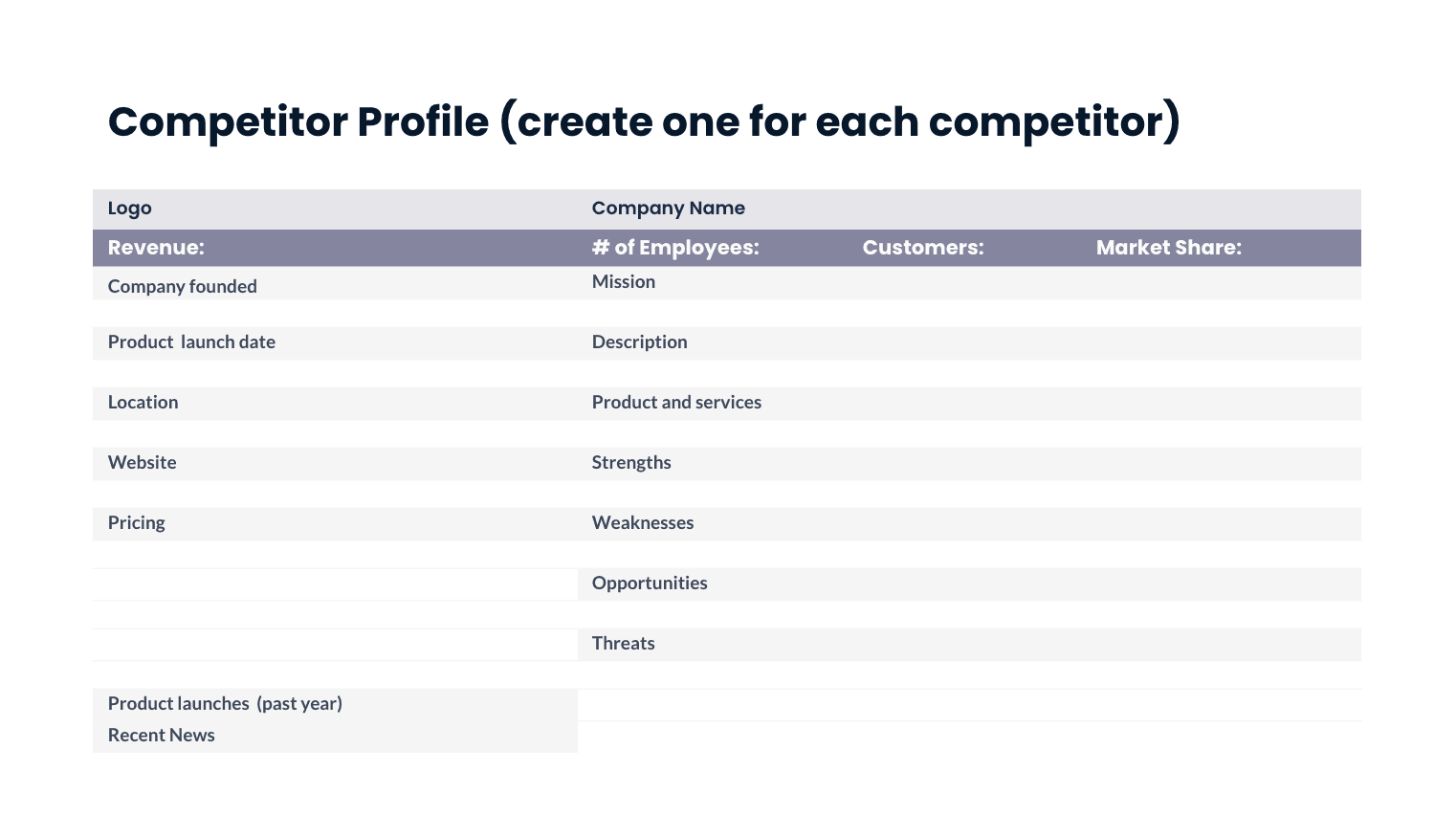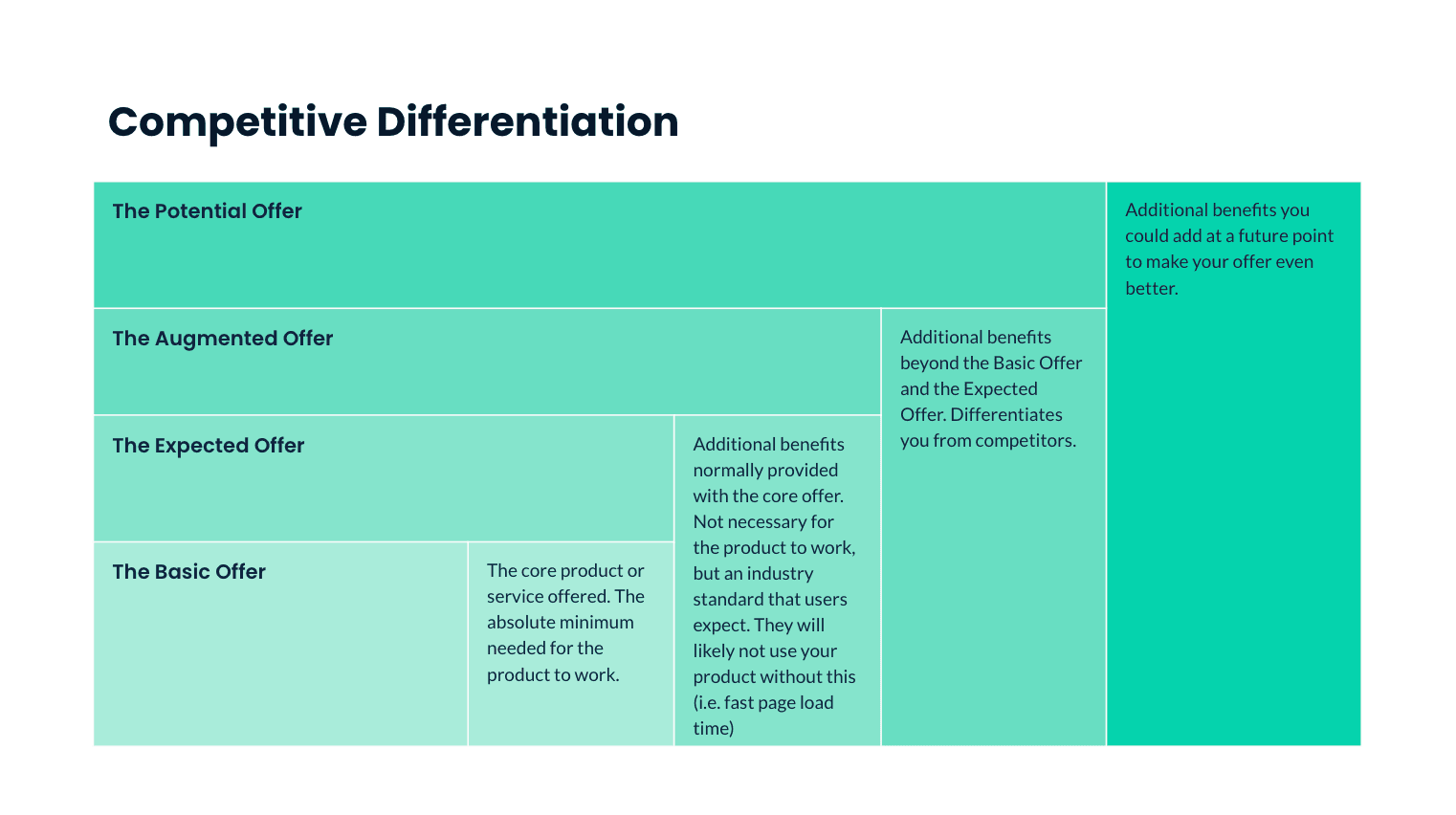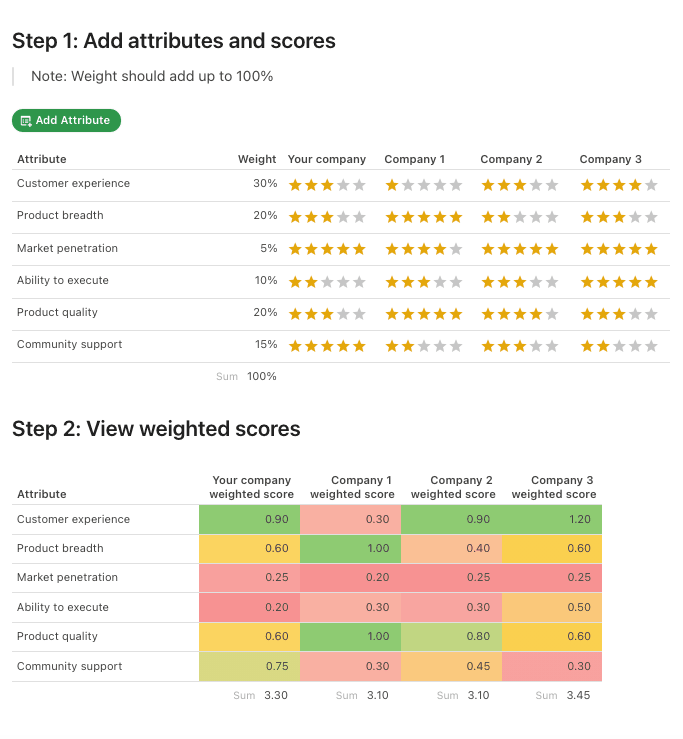Updated: December 16, 2024- 4 min read
Almost every company strategy should take what the competition is doing into account. In fact, it’s critical to understand the other companies in your market in order to find your product-market fit. By keeping an eye on the competition, you’ll be able to detect opportunities and become wary of certain threats. It also enables you to develop strategies to better meet the needs of your customers.
Ready to get started? Access our free Product Comparison Template.

Your Product Comparison Template should help you target how users are currently solving their pain points. One way to do so is by exploring and understanding all of the alternative solutions available in the market. This would include tapping into your direct as well as indirect competitors. Within the same market, your direct competitor will typically offer a similar product. While an indirect competitor will provide a different product that however fulfills the same need. And that is why you must make sure to consider all of your prospective customers’ options in order to differentiate your service and build a long-term competitive advantage.
What is it?
A Product Comparison template is an effective method for gaining a better understanding of the market. Doing so assesses the strengths and flaws of your competition, and b provides you with valuable information on how other businesses are attempting to bring value to your target customers.
Here are some core questions your analysis should ultimately answer :
Who are the other companies competing for customers in your market?
What services and goods do they provide?
What is each competitor’s market share?
What are their advantages and disadvantages?
How can you set your products and services apart?
How do your own products and services compare?
These insights are used by product and marketing teams to guide strategies and identify what will not only differentiate their product but also make it successful. You’re able to do that by developing a strategy that takes into account the strengths and weaknesses of their own offering versus the competition.
When to use it?
Use this template regularly to evaluate and track how your product compares to your competitors in the market. Stay on top of your game and explore these three template options depending on what you want to analyze.
Competitor Profile: Maps out key details about each competitor.
Competitor scorecard: Evaluates your competition and considers the relative value of each attribute, by using a set of scoring metrics
Competitive differentiation analysis: Assesses the basic, anticipated, improved, and potential benefits of your product, to define what sets you apart from the competition
How does it work?
Competitor profile
Create a competitor profile to build an informed and detailed profile for each of your competitors. This would include details about their overall organization, their customer base and their products.
The more you know about your competitors, the better you can guide internal teams to know who they’re running up against and stay one step ahead.

Competitor scorecard
A competitor scorecard makes it easy to rank your competitors and measure any threats they may represent to your business by using consistent scoring criteria.
This template is completely customizable depending on which attributes of your product or business you want to evaluate. For example, organizational attributes (i.e. market awareness or ability to ship). You can also rate product features (i.e. user-friendliness and quality).
Pro tip: you can also use this template to map out a weighted scoring approach by ranking the importance of each attribute from the customer’s perspective.

Competitive differentiation analysis
This template is ideal for assessing the basic, anticipated, improved, and potential benefits of your product.
With completing this template you can then clearly understand areas you need to add value to your product or solution to ensure a delightful customer experience that will serve you a lasting competitive advantage.
Feel free to include both functional and non-functional features (such as design or branding) that help set you and your product apart from others.

Find our free Product Comparison Template here!
On Coda
Use Coda to build docs for teams that bring together words and data. It’s a different way to organize and collaborate. Try it out!

Need more templates?
Still looking for some great templates? Check out our Product Management Template Collection!
Updated: December 16, 2024




